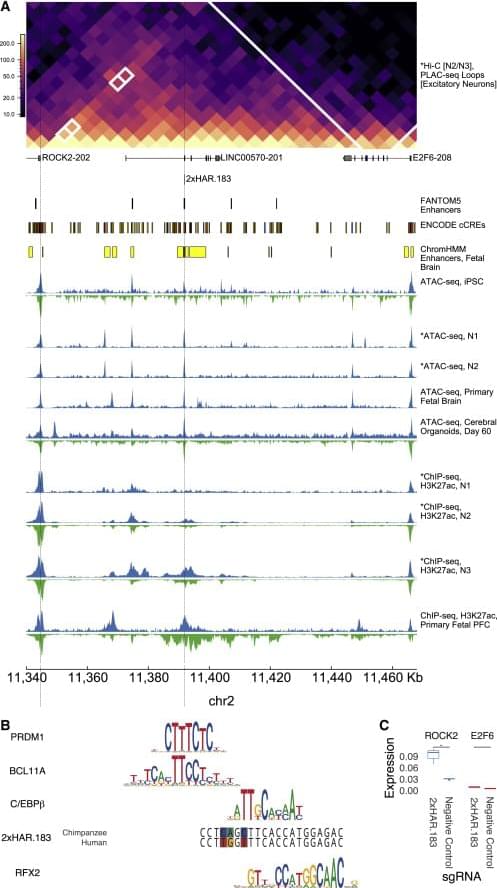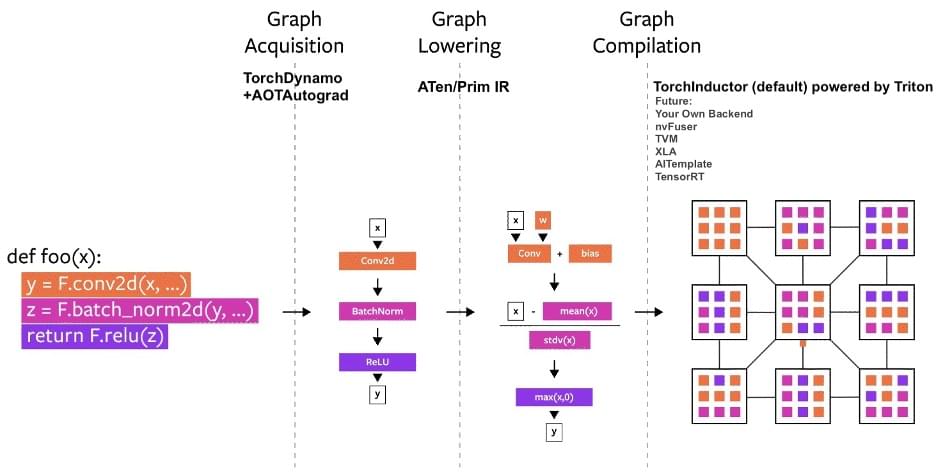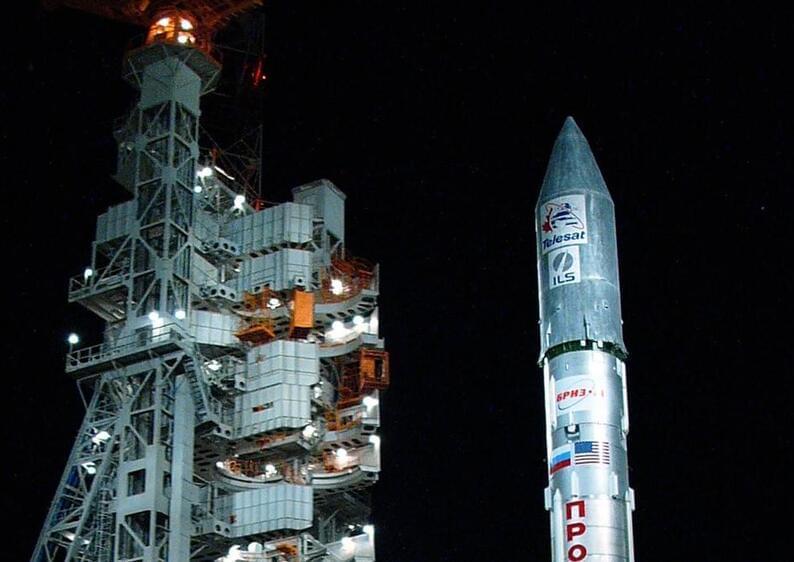Whalen et al. couple deep learning with functional assays in chimpanzee and human cells to interrogate the neurodevelopmental enhancer potential of 2,645 human accelerated regions (HARs). Activity is dominated by cis rather than trans effects, and compensatory changes are identified as a driver of rapid HAR evolution.
Natbot is a Python program that enables GPT-3 to browse the web to perform a specified objective. It works by supplying GPT-3 descriptions of what is shown on the page, such as links and buttons, and then telling GPT-3 to perform an…
Could the advancement of ‘Non Player Character’ tech give us a glimpse of being able to bersion ourselves?
Over the last decade, the landscape of machine learning software development has undergone significant changes. Many frameworks have come and gone, but most have relied heavily on leveraging Nvidia’s CUDA and performed best on Nvidia GPUs. However, with the arrival of PyTorch 2.0 and OpenAI’s Triton, Nvidia’s dominant position in this field, mainly due to its software moat, is being disrupted.
This report will touch on topics such as why Google’s TensorFlow lost out to PyTorch, why Google hasn’t been able to capitalize publicly on its early leadership of AI, the major components of machine learning model training time, the memory capacity/bandwidth/cost wall, model optimization, why other AI hardware companies haven’t been able to make a dent in Nvidia’s dominance so far, why hardware will start to matter more, how Nvidia’s competitive advantage in CUDA is wiped away, and a major win one of Nvidia’s competitors has at a large cloud for training silicon.
Join Our Discord to enter the giveaway (and comment with your username (without the at!)): https://discord.gg/learnaitogether.
Attend WAICF with a 20% discount: https://www.worldaicannes.com/pass/executive-pass/?utm_campa…ICF23-LOBO
References:
►Read the full article: https://www.louisbouchard.ai/vall-e/
►Link for the audio samples: https://valle-demo.github.io/
►Wang et al., 2023: VALL-E. https://arxiv.org/pdf/2301.02111.pdf.
►My Newsletter (A new AI application explained weekly to your emails!): https://www.louisbouchard.ai/newsletter/
Chapters:
0:00 Hey guys, we are going to host tons of cool (and free) events on Discord, join us!
1:01 VALLE
6:09 Giveaway (and how to participate)
#deepfake #artificialintelligence #VALLE
With the rise of the popular new chatbot ChatGPT, colleges are restructuring some courses and taking preventive measures.
Atherosclerosis Archives
Posted in biotech/medical
Cardiovascular disease (CVD) is the #1 cause of death globally and encompasses a broad set of over a dozen disorders that compromise the function of the heart and blood vessels. The major cause of CVD by far, however, is the pathological process of (CDC, 2022). Like the accumulation of rust within pipes, involves the gradual build up of plaque within arteries which compromises the flow of blood and oxygen in the body. Strikingly, is responsible for more than 40% of all deaths worldwide, and 80% of those deaths are in individuals 65 years and older. This includes mortality from devastating pathologies that are among the leading causes of death like coronary artery disease, chronic obstructive pulmonary disorder and stroke (Pahwa, 2022).
“AI needs to be fair and ethical for everyone,” said lawyer/programmer Matthew Butterick. “But Stability AI, Midjourney, and DeviantArt are appropriating the work of thousands of artists with no consent, no credit, and no compensation. As a lawyer who is also a longtime member of the visual-arts community, it’s a pleasure to stand up on behalf of fellow artists and continue this essential conversation about how we the people want AI to coexist with human culture and creativity.”
Since its founding in 2000, DeviantArt had grown to be a haven for artists of all stripes. A core aspect of participating in the DeviantArt community for artists is the practice of sharing digital images of their artwork. Today, DeviantArt bills itself as “the world’s largest art community,” hosting millions of images. At the same time, it offers DreamUp, a product that unlawfully infringes on the rights of its own art community. To add insult to injury, a large portion of the training data for Stable Diffusion—which powers DreamUp—was made up of images scraped from DeviantArt without permission from the artists that posted them.
For more information, please see our case page www.saverilawfirm.com/ai-art-generators-copyright-litigation and our case website stablediffusionlitigation.com.
A group of hackers was able to take control of a decommissioned satellite and use it to stream a hacking conference’s talks and hacker movies.
On Saturday, at the DEF CON hacking conference in Las Vegas, Karl Koscher, one of the members of a hacking enthusiasts group called Shadytel, explained how he and his friends were able to legally stream from a satellite in geostationary orbit—35,786 km or 22,236 miles from the surface of the planet.
The satellite had been decommissioned and was about to be sent to the so-called “graveyard orbit,” a far-away orbit where satellites go to die.
Mexico City.- At just eight years old, Adhara Perez is the girl who exceeded the IQ of Albert Einstein and Stephen Hawking with 162. She dreams of being an astronaut one day, but she came to think that this would be impossible.
When she was three years old, the little girl from the slums of Tlahuac, in Mexico City, was diagnosed with Asperger (autism spectrum). “I made a mockery at school”, she said.
Her classmates called her “weird” and the teachers came to think that she would not have much future in the academy. Nallely Sanchez, mother of the child, did not realize the situation and did not want her daughter to suffer.








